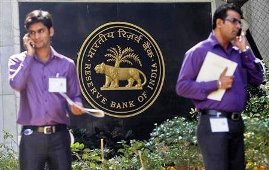 | « Back to article | Print this article |
 Richard Illey, chief economist, (Asia, ex-Japan) at BNP Paribas, talks to Business Standard on inflation and related issues ahead of the Reserve Bank’s annual review of monetary policy.
Richard Illey, chief economist, (Asia, ex-Japan) at BNP Paribas, talks to Business Standard on inflation and related issues ahead of the Reserve Bank’s annual review of monetary policy.
Edited excerpts:
We have seen the January wholesale price index numbers were revised upward, though March inflation figures show a downward trend.
Where is the WPI headed?
The revision of the January numbers was a bit of a surprise.
But, moving forward, the Reserve Bank of India is expecting a deceleration in the numbers.
The headline WPI for 2013-14 will be a bit below six per cent.
Core inflation will fall even more rapidly.
By the end of the financial year, core inflation will fall to below three per cent, the lowest since the global financial crisis.
What will be RBI’s annual monetary policy guidance?
I think they will be hawkish.
At the same time, they will highlight the fact that there have been constantly low WPI numbers.
The consumer price index continues to be in double-digits. How big is that a concern for RBI?
It is a concern.
RBI does not have a clear inflation objective.
It is trying to address a pretty wide menu of options in inflation.
The CPI is a better measure for the consumer.
The sticky nature of CPI largely reflects two things.
The high food inflation is putting a lot of pressure on the CPI and food inflation is also stubborn.
A more elevated CPI is an impediment to aggressive rate cuts.
How much of repo rate cuts and cuts in Cash Reserve Ratio (CRR) are you expecting?
Our base case is that we will get a rate cut this week of 25 basis points.
But I suspect the policy statement will remain relatively cautious about future rate cuts.
I think after that, we will see one more rate cut.
On CRR, I think liquidity is tight but not getting any worse. CRR is at a historically low level and RBI will be reluctant to cut it further.
We